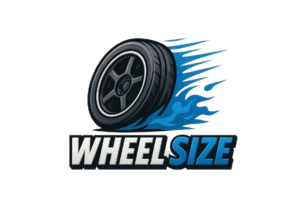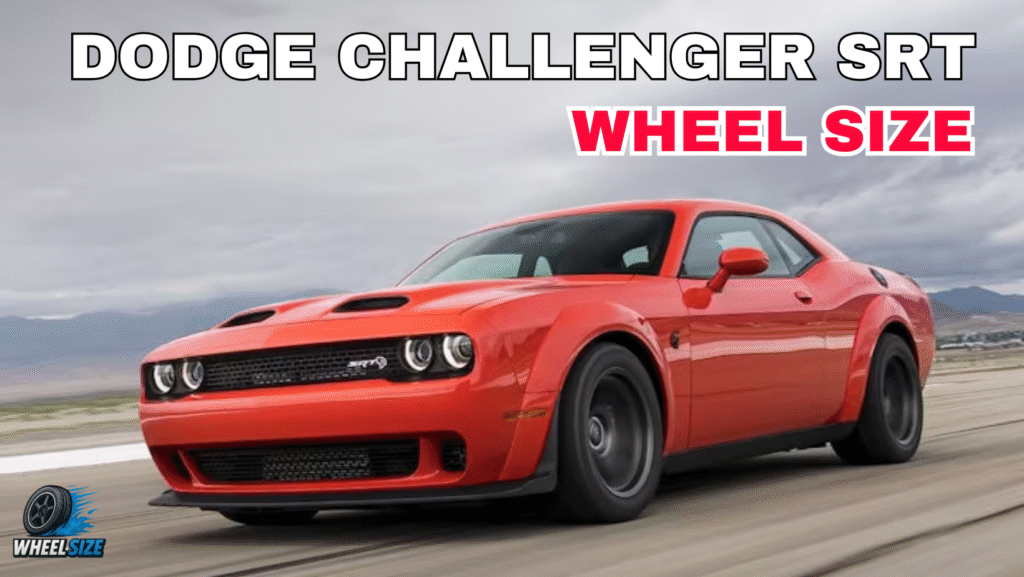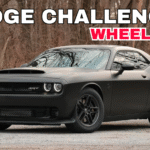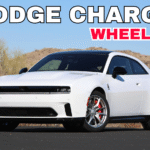The Dodge Challenger SRT has been a performance icon since 2008, and fans are still updating them as late as 2026. These cars already came with aggressive wheel sets that fit their muscle car posture right out of the factory. However, picking the appropriate fitment is very important for safety, handling, and looks. Correct wheel sizes make ensuring that brakes, suspension travel, and body lines have the room to work properly, whether you’re repairing a first-generation SRT8 or customizing a Hellcat Redeye. The improper offset or width can cause tires to rub or wear unevenly, but the right configuration can make both the performance and the look better. This guide goes over each model, lists the OEM specs, and suggests aftermarket improvements that won’t make the car harder to drive. It’s made for people who wish to keep the Challenger’s bold look while improving grip and stability on the road or track.
Understanding Wheel Fitment Basics
Before getting into specific years, it’s vital to know the basics of how to fit wheels. The bolt pattern (5×115 for the Challenger SRT), the center bore (71.5 mm), the offset, and the breadth are all important parts. Offset affects how the wheel looks and handles by changing how far it sits in or out of the fender. The center bore makes sure the wheel mounts correctly without shaking, while the width limits the size of the tires that can fit. The size of the threads is also important. For all SRT models in this range, it should be M14 × 1.5. Recommendations for tire pressure assist keep performance and safety up, especially when upgrading to aftermarket sizes. By learning these words, owners may be sure that the wheels they purchase will fit and work well. This knowledge is even more useful when you want to set up staggered wheels for better rear-wheel-drive performance or when you want to upgrade to bigger wheels, like 22-inch ones, for a custom look.
Dodge Challenger SRT Wheel Fitment by Year
First Generation SRT8 (2008–2014)
These early vehicles had factory wheels that were 20 inches wide, with the front being 8 inches wide and the back being 9 inches wide. The offsets were fixed between +22 and +26 mm to find a good balance between style and stability. Many owners choose aftermarket installations that are 20×10 or 20×11 so their cars look bolder without making them harder to drive. You can choose from basic all-season tires to high-performance summer tires for spirited driving. There is a lot of room between the brakes, but really wide tires may need to have their fenders rolled.
Facelift SRT Models (2015–2018)
The facelift brought some changes to the look of the car and added high-performance variants like the SRT 392 and Hellcat. These versions still had 20-inch wheels, but they could carry bigger tires, which is why staggered 20×9.5 front and 20×11 rear combinations were so popular. The better suspension made it possible to use more aggressive offsets without rubbing. For drag racing, owners often switch to lightweight forged wheels and sticky rear tires to get the most grip.
Special Performance Models (2018)
The SRT Demon was made for the strip, therefore it came with a special set of wheels and tires: narrow fronts to save weight and huge drag radials in the back. This arrangement gave the most grip while launching. For safety, aftermarket drag wheels must still have a 5×115 bolt pattern and a 71.5 mm center bore.
High-Power Era (2019–2023)
The SRT Hellcat Redeye and Super Stock took wheel fitting to a whole new level. Many of them came with staggered setups as usual, and the widebody versions let you use even wider wheels without having to make any changes. People often upgraded to forged 20x11s with 315-section tires to get improved traction in corners.
Post-Production Years (2024–2026)
The years 2024 to 2026 are known as the “aftermarket creativity” period, since Challenger manufacturing ends in 2023. Owners are trying out 21-inch wheels, bespoke forged designs, and finishes that look like they came from the past. It is nevertheless very important to retain the right bore, bolt pattern, and offset to keep handling sharp and prevent putting stress on suspension parts.
Dodge Challenger SRT LC [2008–2026] – Wheel & Tire Specs (6.1 L HEMI, 416 hp)
| Year | Center Bore | Bolt Pattern | Thread Size | OEM Tire Sizes (F/R) | OEM Rim Sizes (F/R) | Offset Range (mm) | Tire Pressure (bar) | Aftermarket Wheel Size Range |
| 2008 | 71.5 mm | 5×115 | M14 × 1.5 | 245/45ZR20 (F) / 255/45R20 (R) | 8J×20 ET24 (F) / 9J×20 ET25.5 (R) | 22–26 | 2.4 / 2.4 | 20″–22″ |
| 2009–2010 | 71.5 mm | 5×115 | M14 × 1.5 | 245/45ZR20 (F) / 255/45R20 (R) | Same | 22–26 | 2.4 / 2.4 | 20″–22″ |
| 2011–2026 | 71.5 mm | 5×115 | M14 × 1.5 | 245/45ZR20 (F) / 255/45R20 (R) | Same | 22–26 | 2.4 / 2.4 | 20″–22″ |
Tips for Choosing the Right Wheels for Your Dodge Challenger SRT
It’s not only about appearances when you choose wheels; you also have to think about performance, comfort, and safety. Forged wheels are stronger and lighter than cast wheels, which makes them easier to handle and speeds up. Think about how you drive. If you use your car on the track, you might need wider wheels for more grip. But if you drive it every day, a narrower width will keep the ride quality. Seasonal settings, such winter wheels with taller tires, keep the Challenger looking strong all year long without losing its ability to be used all year.
FAQ’s
Can I run 22-inch wheels on a Challenger SRT?
Yes, as long as you keep the right offset, bore, and tire profile so that they don’t rub.
What’s the widest wheel I can fit without rubbing?
20×12 is achievable on widebody models, but 20×11 is the safest maximum on narrow body versions.
Do aftermarket wheels void my warranty?
No, but harm caused by a bad fit is not covered.
Are staggered setups better than square for SRT?
Staggered gives more traction, whereas square lets the tires move around more easily.
Conclusion
The Challenger SRT boasts one of the widest variations of wheel fitments in the muscle car industry, from the initial 2008 SRT8 to the last 2023 Super Stock and even custom builds in 2026. Owners may improve both the looks and performance of their cars by following the right specs and knowing how offset, width, and tire size work together. The appropriate wheels will keep your Challenger looking tough and running great, whether you’re cruising down the street, going to the track, or drag racing.



